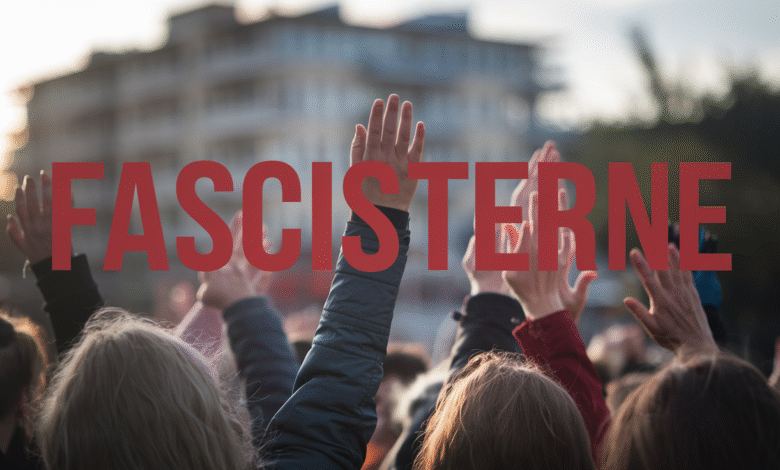Fascisterne: History, Meaning, and Why It Still Matters Today

Fascisterne is a word that comes from the Danish language and it means “the fascists.” Long ago, this word was used to talk about groups that wanted strong control over people and the country. Fascisterne was not only about politics but also about power, rules, and a way of thinking where leaders had all the say. In the past, this type of thinking grew very fast in Europe, especially after World War I. People were scared, poor, and looking for someone to follow. Leaders used that fear to become stronger. Fascisterne showed up in different countries with different names, but the ideas were the same — less freedom, more control, and one leader in charge. Learning about fascisterne helps us understand how dangerous such ideas can be if they come back again in new shapes today.
Fascisterne also teaches us many lessons about human behavior, fear, and society. When people are in crisis, they can choose quick answers that later bring more problems. This is how fascisterne movements became powerful in history. They used things like propaganda, hate, and big promises to win the trust of people. But once they had control, they closed free speech, punished those who disagreed, and forced everyone to follow their rules. In our world today, some groups still try to copy fascisterne ideas in secret or open ways. They may not use the same name, but the tricks look very similar. That is why we must know the history, so we can see the signs early and make better choices for peace and freedom. Talking about fascisterne is not just about the past, it is also about keeping our future safe.
What Does Fascisterne Mean in Simple Words?
Fascisterne is a word from Danish that means “the fascists.” It talks about groups of people who want strong control over a country and the people living in it. They believe one leader should make all the decisions and that everyone must follow the rules. Fascisterne ideas are not just about laws but also about thinking that some people or groups are better than others. These groups often try to control what people can say, do, or believe. In the past, fascisterne groups used fear and promises to get support from people who were confused or scared. They wanted everyone to obey without asking questions. Learning about fascisterne helps us understand how dangerous it is when one group tries to control everything. Knowing the meaning of fascisterne is the first step to see it in history and today.
How Did Fascisterne Start in Europe?
Fascisterne started in Europe after World War I when many countries were weak, poor, and scared. People wanted strong leaders to fix their problems, like hunger, unemployment, and fear of war. Leaders who believed in fascisterne ideas promised to make countries great again and solve all problems quickly. They used speeches, posters, and rules to get people to follow them. Italy and Germany were the main countries where fascisterne became strong, but other countries saw similar groups forming too. These leaders convinced people that they were the only ones who could save the nation. Once in power, fascisterne groups changed laws, closed schools, and punished people who disagreed. They wanted total control of everything: work, education, and even how people thought. Understanding how fascisterne started helps us see how fear and bad decisions can let dangerous ideas grow.
The Main Beliefs Behind Fascisterne
Fascisterne believe in strong leaders who have all the power and make all the decisions. They think their country is the best and everyone must follow their rules. They often dislike people who are different or disagree with them. Fascisterne groups also use propaganda to tell lies or hide the truth so people follow their ideas. They want to control schools, media, and even religion sometimes. These groups believe violence or punishment is okay to stop anyone who challenges them. They like uniforms, symbols, and marches to show power and unity. The main belief of fascisterne is that the group is more important than the people, and one person or party must rule everything. By learning these beliefs, we can spot fascisterne ideas when they appear again in small or hidden ways.
How Fascisterne Leaders Gained Power
Fascisterne leaders gained power by using fear, promises, and clever tricks. They told people that only they could fix the country’s problems like poverty, war, and unemployment. They gave speeches that made people believe in them and used propaganda to control what people thought. They often blamed certain groups of people for problems to make followers angry at someone else. Some fascisterne leaders used violence or threats to scare people into obeying. They also changed laws to stop anyone from speaking against them. Once they had power, they controlled schools, newspapers, and even the army. People followed them because they were afraid or believed in their promises. Understanding how fascisterne leaders gained power helps us know how bad ideas can take control if people are not careful.
The Impact of Fascisterne on People’s Lives
Fascisterne had a big impact on people’s lives because they wanted control over everything. People could not speak freely or follow their own ideas. Schools taught only what the leaders wanted, and newspapers shared only their version of the truth. Many people were punished, sent to jail, or worse if they disagreed. Families lived in fear, and people were forced to follow strict rules. Jobs, religion, and even friends could be controlled. Wars started because fascisterne leaders wanted more land or power. Some people joined them to feel safe or important, while others suffered because they refused to obey. The impact of fascisterne shows how dangerous it is when one group controls all parts of life, and why it is important to learn history so such events do not happen again.
Lessons We Can Learn from Fascisterne History
Fascisterne history teaches us important lessons about fear, trust, and power. People can be easily convinced to follow dangerous ideas when they are scared or poor. Leaders who promise easy solutions may use lies or fear to get control. Fascisterne history shows that free speech, education, and honesty are very important for a safe society. It also reminds us to think carefully before trusting anyone with total power. Watching history helps people notice when small groups try to control others or limit freedom. Learning about fascisterne teaches responsibility, kindness, and courage. It reminds us that we must protect democracy and freedom so everyone can live safely and make their own choices without fear of unfair rules or punishment.
Why Fascisterne Still Matters in Today’s World
Fascisterne still matters today because similar ideas can appear in hidden ways. Some groups may not call themselves fascisterne, but they try to control people’s thoughts, speech, or choices. They may use fear, lies, or promises to gain power. Knowing history helps us recognize these signs early before they become dangerous. Modern societies must be careful and teach children about fairness, freedom, and respect. Talking about fascisterne is not just about the past; it is about protecting the future. By learning and watching carefully, people can prevent history from repeating and keep the world safe for everyone.
How to Recognize Signs of Fascisterne Thinking
Signs of fascisterne thinking include blaming others for problems, wanting total control, spreading lies, and punishing disagreement. Leaders or groups may make people scared to follow them. They often claim only they can fix problems and do not respect freedom or different opinions. Watching how schools, media, or laws are controlled can show signs. They may try to divide people and create “us vs them” ideas. Recognizing these signs early helps stop harm and protect democracy. Everyone can learn to think critically, ask questions, and avoid being tricked by promises that seem too good to be true. Being aware of fascisterne thinking keeps societies fair and safe.
Final Thoughts on Fascisterne and Our Future
Fascisterne is a word from history that shows us what happens when power is used in the wrong way. Learning about it helps people stay alert and protect freedom. It reminds us that everyone’s voice matters, and following blindly can be dangerous.
We must teach children and adults about fascisterne lessons. By remembering history, societies can grow strong and fair. Understanding fascisterne helps us keep a safe and free future for all.
FAQs
Q: What does fascisterne mean?
A: Fascisterne is Danish for “the fascists,” groups that want total control and strong leaders.
Q: When did fascisterne appear?
A: Fascisterne appeared mainly after World War I in Europe, especially in Italy and Germany.
Q: What are the main beliefs of fascisterne?
A: They believe in one powerful leader, extreme nationalism, and controlling people’s lives.
Q: How did fascisterne leaders gain power?
A: They used fear, promises, propaganda, and laws to control people and remove opposition.
Q: Why is learning about fascisterne important today?
A: It helps people recognize dangerous ideas and protect freedom in modern society.



